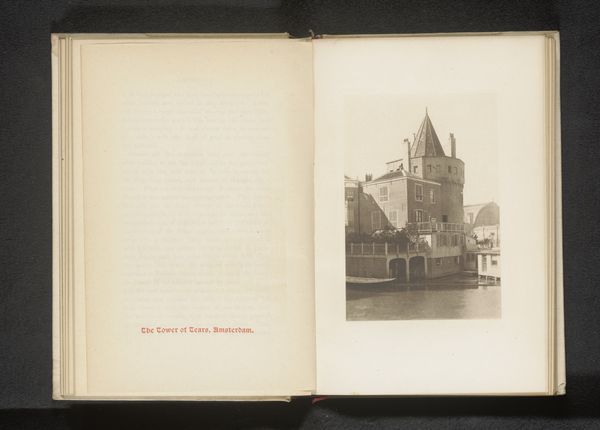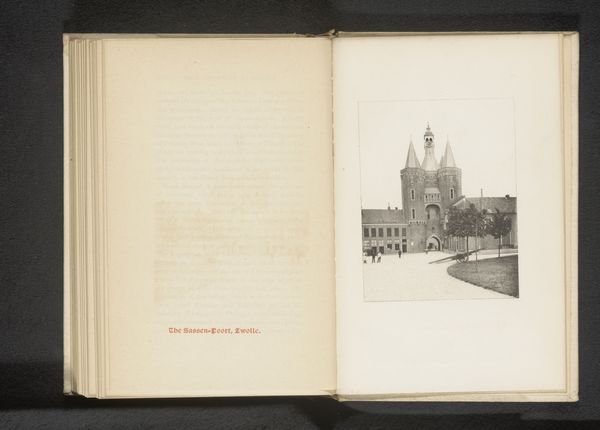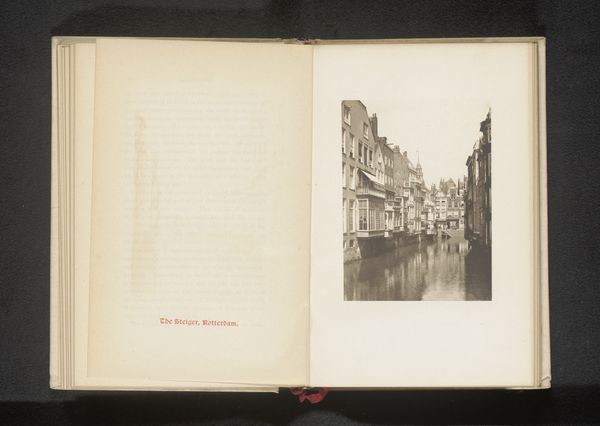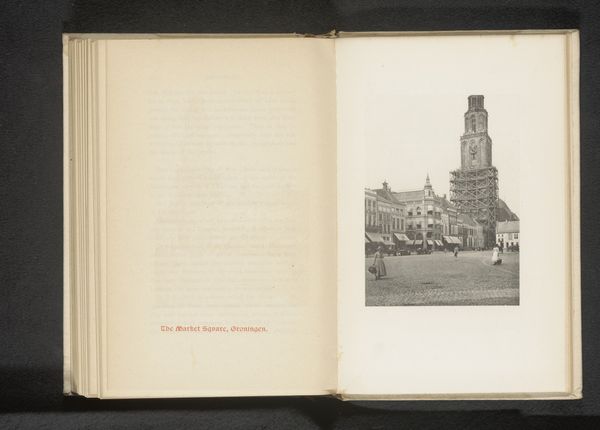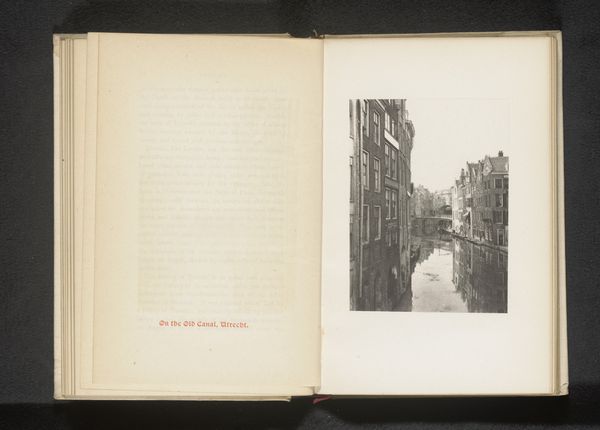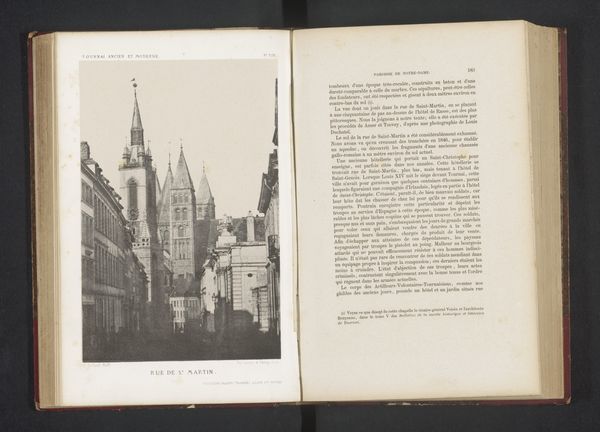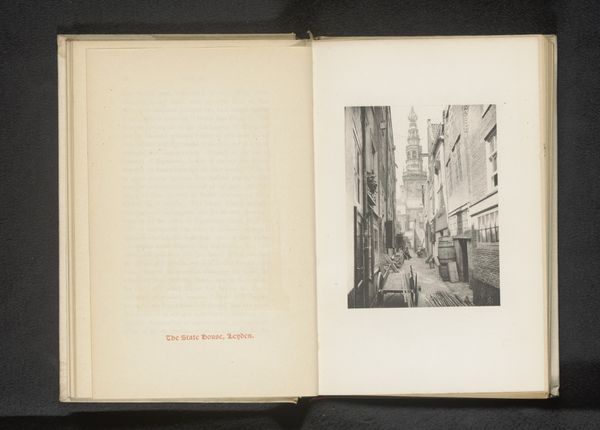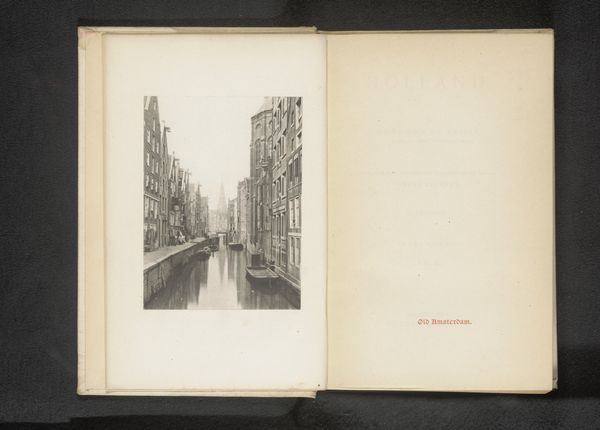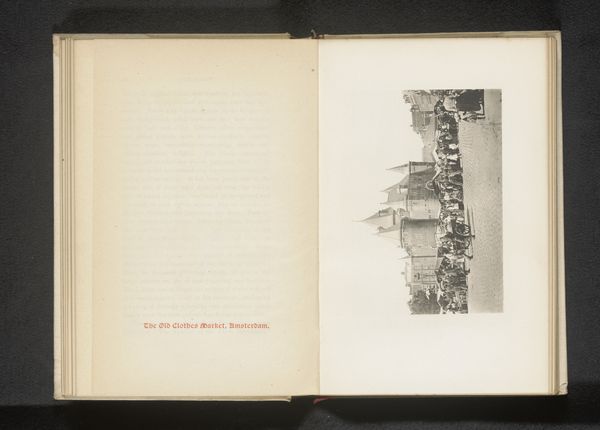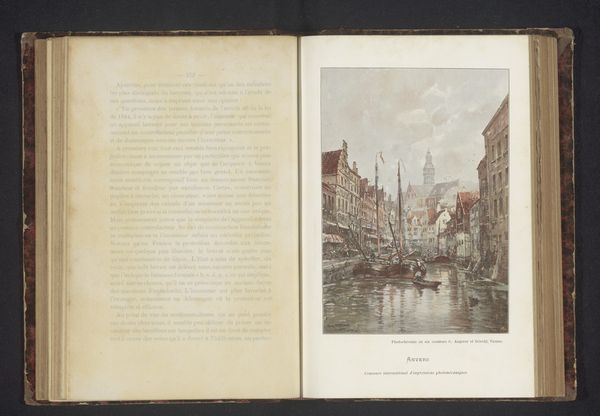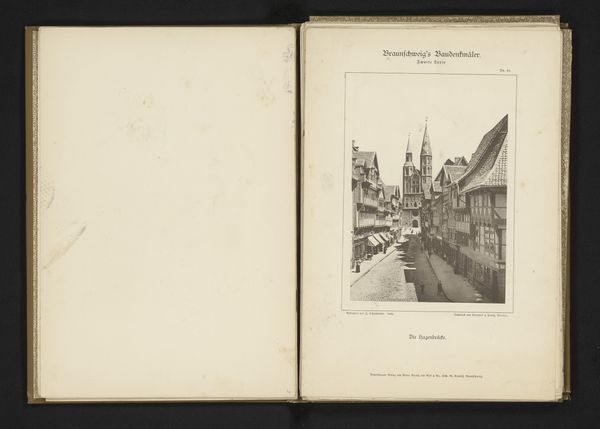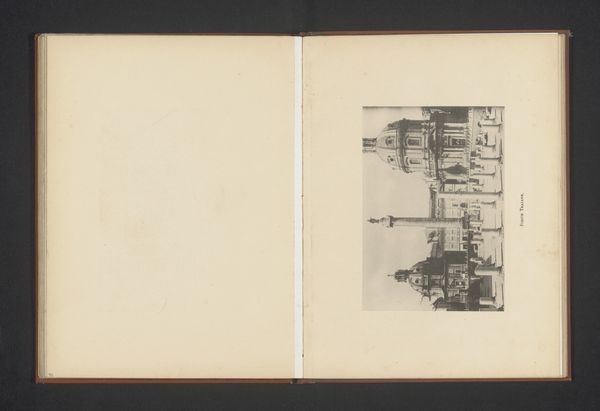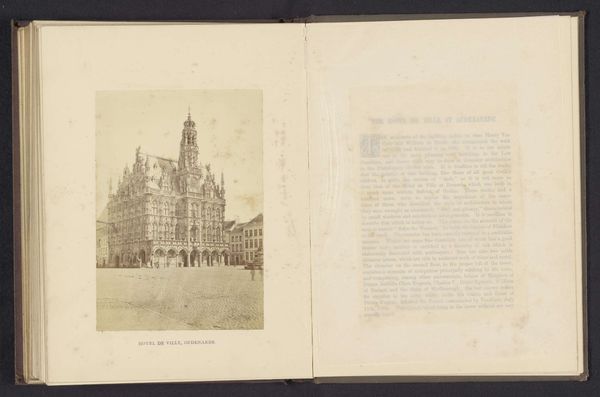
print, photography, albumen-print
#
dutch-golden-age
# print
#
landscape
#
photography
#
cityscape
#
albumen-print
#
building
Dimensions: height 118 mm, width 90 mm
Copyright: Rijks Museum: Open Domain
Curator: This albumen print, predating 1894, offers a photographic rendering of the Waag in Alkmaar, a prominent town weighing house. It presents a cityscape imbued with the characteristics of Dutch Golden Age aesthetics. Editor: My initial impression is dominated by the spire, its verticality creating a compelling dialogue with the horizontal reflection rippling in the canal waters. There is a textural depth in the façade; you can almost feel the weight of its presence. Curator: Indeed. Weighing houses, or "waag" buildings, were crucial centers for commerce in Dutch towns like Alkmaar. They weren't just about trade; they functioned as hubs of social interaction and civic life, embodiments of a city’s economic power and civic identity. This image serves to solidify the "waag" building in local civic mythology. Editor: Structurally, note the interplay of light and shadow. The composition carefully balances the solid architectural forms with the fluid reflection below, subtly manipulating the perception of depth, and the canal becomes a second canvas where the town is rewritten in ephemeral terms. Curator: Precisely, this image acts as a documentary artifact, allowing us a window into late 19th-century Alkmaar, and the positioning and clarity underscores civic pride. Albumen prints like these gained prominence through dissemination as photography became an integral aspect of chronicling urban landscapes. Editor: I find the print's tonality, especially the soft greys and silvers of the albumen process, strangely evocative. It captures the essence of a specific time of day, maybe late afternoon, and invites a contemplation beyond the mere depiction of architecture. Curator: These albumen prints provided a crucial mechanism through which urban identity was crafted and consumed. This vista provided more than the document of location; it provided affirmation of social structure and civic placement. Editor: Agreed, yet despite all that embedded cultural context, there's still room to lose yourself in the granular details—the precise way the light dances on the canal's surface. Curator: Studying such imagery allows us insight into how visual narratives mold understandings of society and the values embedded within it. The image isn't just documentation. It is, rather, a construct. Editor: Ultimately, beyond its historical importance, the lasting strength comes from this photo's intrinsic quality; its layered tonal palette continues to subtly captivate.
Comments
No comments
Be the first to comment and join the conversation on the ultimate creative platform.
